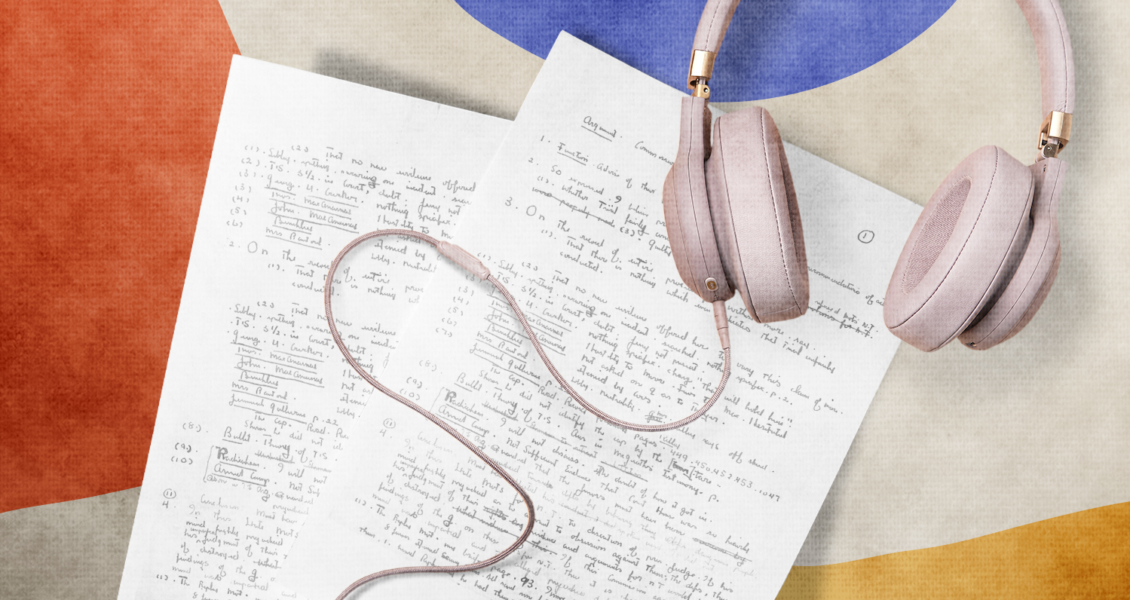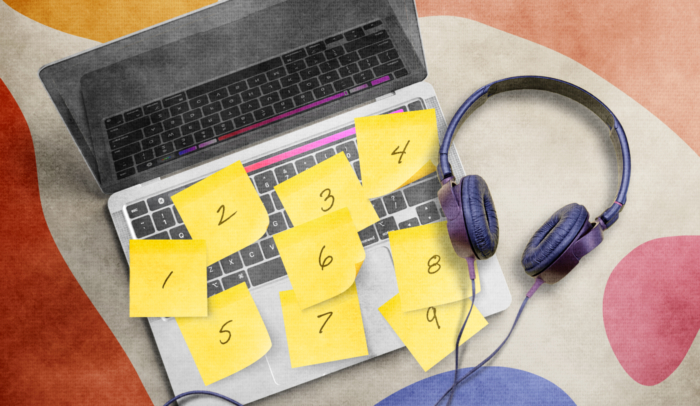Audiobooks are one of the best ways to expand your book’s audience, but every Author needs to remember this essential truth:
If you want listeners to buy, listen to, and enjoy your book, it must sound good.
Would you listen to 8 hours of muffled audio brimming with background noise that jumps from high to low volumes?
No way. You’d stop listening no matter how good the book’s content is. You probably wouldn’t have bought the book in the first place because the sample would have deterred you.
Don’t let this happen to your book. Your audiobook must sound as professional as you are.
Audiobook distributors have specific requirements for the books they will accept. If you want your book to succeed, it’s important to pay attention to those requirements during the recording process. It’s equally important to keep them in mind as you edit your book.
Also, remember that just because your audiobook passes distribution spec doesn’t mean it sounds good. Those requirements are the bare minimum you need to create a professional-sounding book.
Editing is one of the most important steps of publishing an audiobook, but it’s not always the most intuitive. Below, I’ll walk you through the process of editing an audiobook and provide 9 essential tips to help your audiobook sound as professional as possible.
The Audiobook Editing Process
The goal of editing is to create a clean, high-quality audiobook that holds listeners’ attention.
If you don’t have experience with audio editing, we’d recommend finding a professional editor or paying for a done-for-you service like Scribe Audiobooks. Editing takes specialized skills and is part of audiobook production where you don’t want to scrimp.
If you decide to go the DIY route, we recommend that you break your process into the same 2 steps pros use: Editing and Quality Control (QC).
Editing
An editing engineer will remove sounds from your recording that shouldn’t be there: pops, clicks, background noise, breathing, fuzz, reverb, stutters, and filler words like “um” and “uh.”
An editing engineer will also modify the pace of the narration, if necessary, and they’ll flag any places where the narrator needs to record audio pickups (i.e., places where the audio isn’t correct or clean enough to be integrated).

The goal is to make the recording sound as seamless as possible. Listeners should feel like your book is in their heads, not an echoey room with a running refrigerator.
Quality Control
After the first editing pass, a QC engineer will listen through your audiobook to catch any errors that may have slipped through.
They’ll follow along with the audio while reading your book manuscript to make sure the two versions match word for word. They’ll mark any mispronunciations, missed words, misreads, or noises. These kinds of errors will likely require pickups as well.
The QC step may seem nit-picky, but it’s critical to creating a flawless audiobook. According to the Audio Publishers Association, 74,000 audiobooks were released in 2021. With such a competitive market, details can make or break your book.
For the intrepid, detail-oriented DIY editor, here are our top 9 tips for making sure your book will live up to listeners’ rigorous expectations:
1. Make Sure You Have the Right Tools
Before doing anything else, ensure you have the correct audio editing software and a computer that’s up to the task.
If you’ve Googled “how to make an audiobook,” chances are, you’ve seen someone who says, “It’s easy! All you need is stuff you already own: an old laptop and GarageBand!”
They’re wrong.
Yes, you can record and edit your audiobook using a bare bones set-up, but it will sound like you made it on your laptop. For high-level audio editing, I recommend using one of the following programs instead:
- Reaper: A discounted license, suitable for most Authors’ needs, costs $60.
- Audacity: This is a free, open-source program.
- StudioOne: The basic version costs $99.95, while the professional version costs $399.95.
- Twisted Wave: After a 30-day demo, a license costs $99.90.
- ProTools: A one-year subscription is $199, or you can subscribe monthly for $34.99.
These programs have more nuanced options for manipulating audio, like the ability to process multiple tracks, add edit effects, alter tempo and pitch, and tinker with tiny sections of a track.
I want to be clear about something here, though. While the software can do all those things, most audiobooks should not use those features. I’ve encountered many amateur narrators and first-time Authors who think they can add those effects after recording and sound like a god.
Nope.
The more you edit your audio, the more edited your audio will sound—especially if you aren’t a professional sound engineer. You’re also leaving the field wide open for mistakes.
Making a clean, beautiful audiobook usually requires a clean, beautiful recording from the outset—not quick fixes that can be added later.
Your computer must also be new enough to ensure the operating system will support your recording software and the plugins you’ll need. It must also have enough RAM. I recommend at least 16 GB, but you can get it done with less in a pinch.
If your computer doesn’t live up to those standards, you might need to buy a better one for editing and mastering your audiobook.
2. Follow ACX’s Audio Submission Guidelines
Remember when I said audiobook distributors have specific requirements for the quality of the books they’ll accept?
One of the biggest distributors—and one that you will likely end up working with in some capacity—is Audiobook Creation Exchange or ACX. Amazon owns ACX, and they distribute audiobooks to Amazon, Audible, and iTunes.
Even if you plan to distribute your book through another distribution platform, it’s a good idea to familiarize yourself with ACX’s audio submission guidelines. They’re consistent with most retail platforms, so if your audiobook meets ACX’s criteria, it will likely meet those of other platforms.
You can find a more comprehensive explanation of these submission guidelines on ACX’s website, but here’s a rundown of the basic criteria:
- Your audiobook must be consistent in overall sound and formatting.
- It must be narrated by a human.
- It must include opening and closing credits.
- It must comprise all mono or all stereo files.
- It must include a retail audio sample 1-5 minutes long.
- Each audio file must contain only one chapter per file, and the section header must be read aloud.
- Each file must have a running time of less than 120 minutes.
- Each file must have room tone at the beginning and end.
- Each file must be free of extraneous sounds.
- Each file’s volume must measure between -23dB and -18dB RMS and have -3dB peak values and a maximum -60dB noise floor.
- Each file must be a 192kbps or higher MP3, Constant Bit Rate (CBR) at 44.1 kHz.
- The names of each file should contain only standard US alpha-numeric characters (no symbols).
If your audiobook doesn’t meet these requirements, ACX (and likely, other platforms) will reject it, and you’ll have to go back to the editing room. Focusing on these criteria from the outset will help you avoid costly mistakes.
3. Take the Time to Learn the Editing Software
There’s a reason why professional editors exist. Theirs is a highly specialized craft that takes years to perfect. You can’t just download Audacity, jump in, and expect it to be easy without investing time in learning the editing software.
There are excellent tutorials on audio editing forums and YouTube, but be prepared for a steep learning curve. I recommend starting with a smaller, more manageable test project before you record your whole audiobook.
As you gain skills with your editing software, you will learn tips and tricks to make the process easier when you’re finally ready to tackle your full-length audiobook.
4. Use Headphones while Editing
You must use headphones when you edit and master your audiobook. Even with high-end speakers, it will be almost impossible to pick up on small noises in your audio background.
Much of your audience will listen to your book on headphones, so they’ll be able to hear the tiniest components of the audio. Edit with these customers in mind.
Budget at least $100 for a good set of headphones—preferably studio-quality closed-back headphones. My recommendations are Sony MDR 7506 or Audio Technica ATH-M50X.
5. Use Room Tone to Cover Gaps and Space out Sections
You may be wondering, What is room tone?
To someone without much experience in audio editing, room tone sounds like silence. But to an audio professional, it refers to the subtle micro-sounds in every room.
While collecting a sample of silence when you begin recording may seem strange, it’s essential to creating a seamless book.
Here’s why: every room sounds different. Even different rooms in the same recording studio can sound different. Those differences are tiny, but they’re shockingly powerful when creating seamless audio.
For example, if you record audio pickups in a new studio, the difference in background noise could be distinct enough to ruin your book’s continuity. Not only that, but the equipment will sound different, and the way the equipment picks up your voice will also be different.
If you have room tone samples, you can hide many sins. If there is a noise, pause, or loud breath, you can cut it out of the audio and drop in a clean chunk of room tone. You can also use room tone to smooth out audio pickups that might have been recorded weeks apart.
During the editing process, engineers need to insert room tones time and time again. A pro will have pre-cut sections of room tone that correspond perfectly to the audio gap or that match the narrator’s pacing.
Room tone is an important tool for covering gaps and spacing out sections of your audiobook. Room tone is so critical that it’s one of ACX’s technical requirements.
Room tone serves another important purpose, too. Adding a few seconds of room tone at the beginning and end of each audio file makes it easier for listeners to follow along. The room tone creates a buffer, so listeners know when one chapter has ended and another has begun.
Getting room tone right is an art, and it’s the biggest player when it comes to creating flawless audiobooks.
6. Reduce or Remove Breaths (but Not Too Much)
A good microphone will pick up on every sound you make, so even the lightest breathing can still come through in the recording.
That’s not always a bad thing. Breathing is part of being human, so having some breathing noises makes your narrator sound more alive.
But balance is key. No one wants to listen to a book with a narrator constantly gasping for air. To find a happy medium, you’ll need to reduce the breathing noises in your recording so they don’t distract listeners.
Here’s a good basic rule: remove any breaths at the end of a paragraph, any double breaths, and any gasping, wheezy, or distracting breaths.
There are 2 ways to do this: manually or with an automatic plugin. Each method has its pros and cons.
When you manually remove breaths, it’s easier to keep the breaths that add texture. But manually combing through 5+ hours of audio can be exhausting. You may also need to tweak the room noise in the gaps your editing leaves behind, so this option will take a lot of work.
An automatic plugin is easier to use but is not as flexible. There’s a gamut of options, and they all have limitations.
If you use a plugin that removes every breath from your recording, you won’t have the touches of humanity that help your book connect with listeners.
Alternatively, you could use a plugin to lower the volume on your breath levels, but this option will leave every breath intact. Even though the pre-sentence breaths are quieter, they can still be distracting.
Many editors will also use upward expansion, which essentially reduces the level of any audio that drops below a certain decibel threshold. Even loud breaths tend to come in at a lower volume than the level of a narrator’s voice, and upward expansion helps editors pull every low sound down by an additional 10 decibels or so.
But—and this is a huge caveat—you need to understand what you’re doing with upward expansion, or it will sound terrible.
Ultimately, using a plugin is faster, but if you don’t use it judiciously, it can lack sophistication.
7. Remove Awkward Pauses
A good narrator will dramatize your manuscript. They’ll read enthusiastically, change their vocal tone to fit the content, and pause for dramatic effect.
You’ll want to leave those pauses in place when you’re editing. They’re part of your audiobook’s texture and help listeners follow along.
But sometimes, narrators pause less intentionally. Maybe they lost their place. Or maybe they needed to think about how to pronounce a word or convey an emotion. If your book has multiple character voices, your narrator may pause to get the new voice right. These are the kinds of pauses you should shorten during editing.
Here’s a good rule of thumb if you’re on the fence about breaths or pauses. Ask, Does this improve the quality or heighten the dramatic effect of my book?
If the answer is yes, leave it. If not, remove it.
8. Read the Manuscript While Listening to the Recording During Quality Control
When you’re ready for your QC pass, it might be tempting to close your eyes, get in the zone, and immerse yourself in the audio. After all, isn’t the goal to find any lingering micro-noises that might be hanging out in the recording?
Yes, that is one goal, but it’s not the only goal. You’re also listening to ensure that your audio accurately matches your manuscript. People who listen to the audio version of your book should have access to the same content as those who buy the print version. Each format needs to match perfectly.
You can’t close your eyes and go with the flow for that to happen. You must follow along with the manuscript while listening to the edited recording.
Pay attention to discrepancies in even the tiniest words. It might not seem like it matters if the narrator says “the” instead of “a,” but those tiny mistakes can add up.
Remember, your professionalism is on the line, so your book needs to be as perfect as possible.
9. Note Errors So You Can Find Them Easily
Throughout the editing process, note any errors so you can find them easily. One of the easiest ways to do this is to jot down the time code or create a timestamp where the error occurred.
Taking notes becomes especially important during the QC pass. As you follow along in the manuscript, I recommend writing down the time code and highlighting the affected portion so it’s easier to find later.

Whatever system you use, be consistent. The better your notes are during your actual editing passes, the quicker fixing mistakes becomes.
At Scribe, QC editors use Pozotron’s audiobook proofing tools, which makes our listen-throughs and note-taking system even more thorough. Among other assets, Pozotron provides reports to help us locate mismatches between the audio and script.
While our editors’ ears are trained for this work, Pozotron takes our listening to the level of a superpower.
Additional Tips for Editing Audiobooks
Every professional sound editor has their preferred tips and tricks. As you get more familiar with editing, you will likely develop some of your own.
The key to good editing is paying close attention. It’s easy for your mind to wander, especially if you’ve been listening for hours on end. If you need to, take breaks. Let your mind reset.
It’s hard to focus for prolonged periods, so think of the editing process as just that—a process. You’re not going to conquer your audiobook in a single session.
A pro editor can complete an hour of finished audio in about 2 or 3 hours. Someone new to editing could take 10 hours or more to achieve that same hour of polished content. If a new editor tries to hit that 2:1 or 3:1 mark, I guarantee the audiobook will sound sloppy.
Don’t be tempted to rush this stage because editing can make or break your audiobook.
Good editing takes time, and DIY editing is a huge undertaking if you want to do it right. If you feel like you don’t have the time or skills to do it properly, we recommend letting professional sound editors like Scribe Audiobooks handle the process for you.


